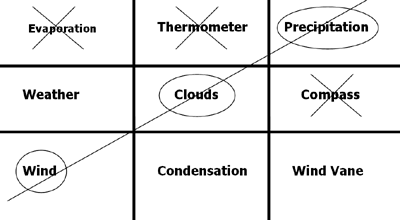In this section you will find strategies that will help your students to comprehend science texts and other written materials dealing with science content. These strategies can be used by teachers in every content area to support literacy instruction. There are 11 strategies in this section. Use the open (+) and close (-) to view the strategies below.
- Life Connections
Ask students to identify three new words in a text selection, list these, define them, and then write examples of how each word is connected to their lives. Take time to have students share these with the rest of the class.
Example
Vocabulary Word: Wave
Life Connections: My brother and I looked at waves on a vacation trip. We watched as wave after wave hit the sandy beach near our beach house on South Padre Island.
- Pictures Worth. . .
Have visuals around the room illustrating students' current science lesson or unit. These can include drawings, posters, models, displays, mobiles or other visuals.
Example
In an investigation about models make sure that you have of models around the room (i.e., a globe, a solar system model, etc).
- Concepts First
Ask students to skim a section to see what the text is about, using pictures as additional clues. Discuss the big ideas in the text as a class and make a list of these on a board or flipchart. Ask your students to then read the text for more details.
- Science Word Wall
To create a Science Word Wall, place the alphabet in big letters on your classroom wall. When a student comes to a word that he or she does not know, the student prints it in large letters on an index card or construction paper to go on the Wall. If possible, the student also illustrates the word. You may want to limit your Science Word Wall to something like five new words a week.
Example
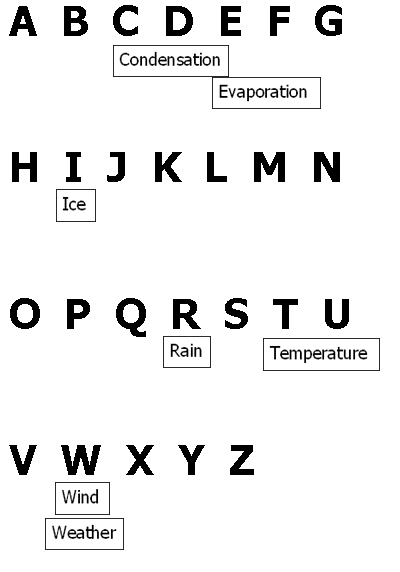
- My Glossary
Students can make their own glossary of terms. Ask students to:
- identify a word they do not know and write it down.
- find and write the definition.
- illustrate the word, if possible.
- write a sentence using the word.
Example
Example from Science Content: Fossils.
Term: Fossil
Definition: Fossil: any evidence of past life
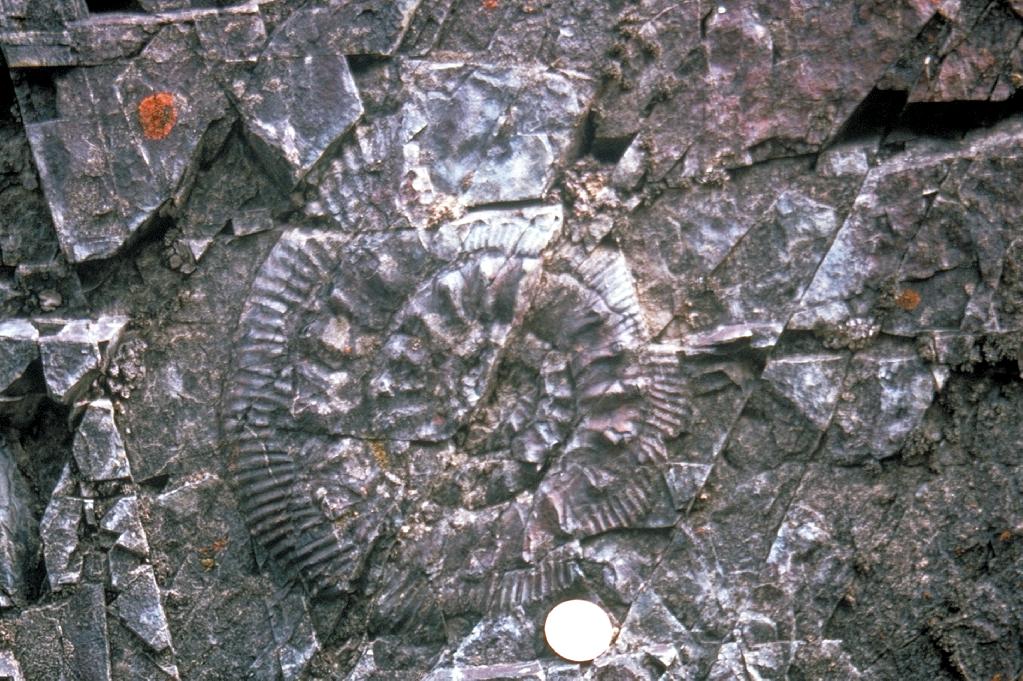
Sentence: We went to the museum and viewed an exhibition full of dinosaur fossils.
- "Think-Pair-Share" for New Words
- Ask students to identify a new word in their text.
- Give students time to think of a definition for the word.
- Ask the students to work in pairs to refine their definitions.
- Ask students to share their definitions with the class.
- Guide Questions
Make a short list of questions to ask students to consider as they read a text passage. They should write responses to the questions as they encounter the information in the text.
- Peer Teaching
- You will need to generate a short vocabulary list relating to a science lesson.
- In small groups, ask students to look up one word on the list. They then need to figure out the best way to teach the word's meaning to others. They might choose to draw pictures of the word or to act it out using a "charades" approach.
- Concept Maps
Concept maps help students see the connections between words and ideas. Ask students to read a short science passage. When they finish, ask them for one big idea from the passage. Use this idea to begin a concept map on a board or flipchart, by putting the idea into a circle or box. Use lines to show the relationships between the ideas or concepts in the boxes or circles in the map. With practice, students can create their own concept maps for science ideas.
Example
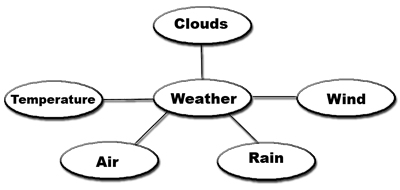
- 3-D Concept Map
To make a 3-D Concept Map, students should:
- pick a big topic, such as "rocks".
- write the topic in large letters on a card.
- write "subtopics" on other cards to hang off the big topic card with string or yarn.
- ask students to illustrate the subtopics.
- hang the mobiles up around the classroom.
Example
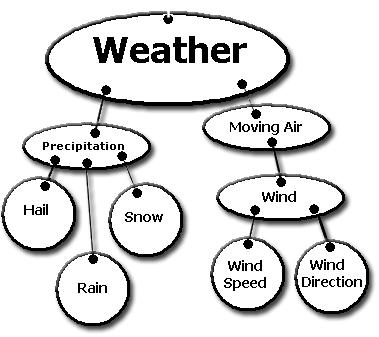
- Tic-Tac-Toe with Words
Tic-Tac-Toe is a good review of concepts and vocabulary.
- On the board, draw a tic-tac-toe grid. In each box write a vocabulary word.
- Split the class up into two groups. (Team "X" and Team "O").
- Ask the teams to pick one person each to be their Speakers.
- Taking turns, ask each Speaker to call out a vocabulary word on the grid.
- The Speaker's team has to give a quick definition of the word. If they are correct, write an "X", for Team "X", or an "O" for Team "O" in the box.
- The object is to form a line of "Os" or "Xs" just like tic-tac-toe to win.
Example
